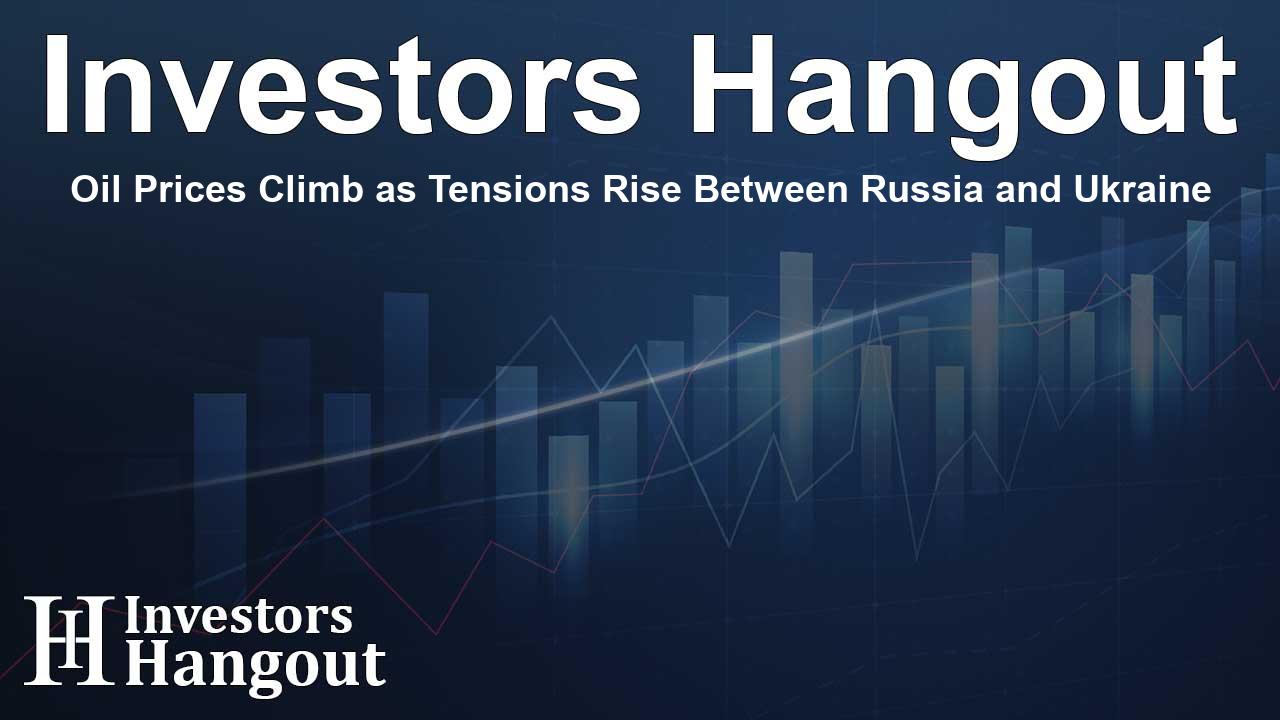Oil Prices Climb as Tensions Rise Between Russia and Ukraine

Oil Prices Gain Momentum Amid Global Tensions
In recent trading sessions, oil prices have experienced a notable rise, reflecting trader reactions to escalating tensions between Russia and Ukraine. As these geopolitical developments unfold, the market has seen an uptick in prices, signaling a growing concern for potential supply disruptions. This week, oil has been on a path toward a positive weekly gain, demonstrating the market's sensitivity to external pressures.
Contributing Factors to Rising Oil Prices
The current spike in oil prices can be attributed to multiple factors, most prominently the apprehension regarding supply issues stemming from the ongoing conflict in Ukraine. In light of Ukraine’s enhanced military capabilities, particularly with the use of Western-supplied long-range missiles, there is increased anxiety about potential retaliatory actions and supply chain interruptions.
Moreover, Russia’s recent military moves, including the firing of a hypersonic missile, further amplify these concerns. Statements from President Putin suggest that the situation may escalate, creating an environment of uncertainty that often leads to oil price increases as traders factor in elevated risks.
Concerns Over Supply Disruptions
Market players are deeply worried about how Ukraine might target Russia's energy infrastructure, which could disrupt oil production and restrict global supplies. This prospect serves as a support mechanism for crude oil prices amid the chaos. Additionally, the past month saw significant losses in oil values due to fears of decreased demand, particularly from major buyer China, which now seems to be reversing as traders seek opportunities to buy at lower prices.
OPEC+ Decisions Impacting Oil Market
The Organization of Petroleum Exporting Countries and its allies, collectively known as OPEC+, are also a key player influencing market dynamics. Recent reports indicate that OPEC+ might consider delaying a planned production increase that was originally slated for implementation next year. This hesitation is fueled by ongoing concerns about waning demand and the pressures from falling prices.
As the cartel continues to monitor market conditions closely, the anticipated meeting on December 1 could further shape the future of oil production strategies. Originally aiming to boost production toward the end of 2024, OPEC+ is reevaluating its approach, especially in light of the expected increase in supply from non-OPEC producers that could lead to a supply surplus.
Market Reactions and Future Outlook
The oil market's response to such anticipated changes highlights its volatility and sensitivity to global events. Traders are keeping a close eye on not just the geopolitical scene but also the decisions made by OPEC+ as these elements intertwine. With prices still reeling from October's losses, many are looking for signs of recovery and stability that could come with the right market adjustments.
Conclusion: The Path Ahead for Oil Prices
The recent rise in oil prices underscores the complexities facing the global market, where geopolitical tensions inject unpredictability into trading strategies. As the situation evolves, the interplay of supply concerns and OPEC+ policies will be pivotal in determining the trajectory of oil prices in the coming weeks and months.
Frequently Asked Questions
What are the main drivers of the recent oil price increase?
The recent increase in oil prices is primarily driven by tensions between Russia and Ukraine, concerns over supply disruptions, and OPEC+ production strategies.
How does the Russia-Ukraine conflict affect the oil market?
The conflict raises fears of damage to Russia’s energy infrastructure, potentially impacting global oil supplies and elevating prices due to increased risk assessment by traders.
What actions is OPEC+ considering to stabilize oil prices?
OPEC+ is contemplating delaying a planned increase in oil production originally set for next year, reflecting the need to manage demand and market stability.
Why did oil prices fall in October?
Oil prices experienced declines in October due to concerns over decreasing demand, particularly from major consumer China, which had a significant impact on market sentiment.
What is the expected outcome for oil prices in the coming months?
The outlook for oil prices remains uncertain, contingent on geopolitical developments and the decisions of OPEC+, with potential volatility influenced by changing supply and demand dynamics.
About Investors Hangout
Investors Hangout is a leading online stock forum for financial discussion and learning, offering a wide range of free tools and resources. It draws in traders of all levels, who exchange market knowledge, investigate trading tactics, and keep an eye on industry developments in real time. Featuring financial articles, stock message boards, quotes, charts, company profiles, and live news updates. Through cooperative learning and a wealth of informational resources, it helps users from novices creating their first portfolios to experts honing their techniques. Join Investors Hangout today: https://investorshangout.com/
Disclaimer: The content of this article is solely for general informational purposes only; it does not represent legal, financial, or investment advice. Investors Hangout does not offer financial advice; the author is not a licensed financial advisor. Consult a qualified advisor before making any financial or investment decisions based on this article. The author's interpretation of publicly available data shapes the opinions presented here; as a result, they should not be taken as advice to purchase, sell, or hold any securities mentioned or any other investments. The author does not guarantee the accuracy, completeness, or timeliness of any material, providing it "as is." Information and market conditions may change; past performance is not indicative of future outcomes. If any of the material offered here is inaccurate, please contact us for corrections.